Why we ran it: To discover whether the Skoda Fabia Monte Carlo could prove you can still get a great all-rounder for less than £25k
Month 3 - Month 2 - Month 1 - Specs
Life with a Skoda Fabia: Month 3
Was an affordable, sensible supermini dressed up for Monte Carlo a winner? - 25 January 2023
Which factors influence your decision most when buying a new car? For me, it would be an equally important combination of price, reliability and emotional appeal. Surprisingly, though, this isn’t the case for the general public. A 2018 survey by Statista found the average Brit cares most about fuel economy, safety, suitability for daily use and low price, high quality and driving comfort, in that order – only after which does design come up.
By those metrics, my Skoda Fabia made a lot of sense. I regret to say that I never formed an emotional bond with it in the way that I have with some long-termers in the past, but then I suppose it wasn’t really that kind of car. Actually, it was the kind of car that played exactly to those average Joe priorities. So let’s consider it in those terms, shall we?
Economy isn’t the easiest one to quantify, because our Fabia was in Monte Carlo trim, which is not only set up to be driven in a racier style but also gives you more power to do so, the frugal little 1.0-litre turbo petrol triple swapped for a 1.5-litre turbo petrol four (plus the manual ’box swapped for a dual-clutch auto). In my 3008 miles, it scored 39.4mpg, which sounds poor, but then my use was mostly motorway. If you’re not one to hurry or just a more typical supermini driver, you can expect up to 50mpg (or up to 55mpg if you pick the more sensible 1.0 TSI variant).
As for safety, I can’t argue with Euro NCAP’s five-star assessment, although I can with Skoda’s lane-keeping assistance technology, which would annoyingly cut in when it wasn’t wanted, but which could be turned off easily anyway.
‘Suitability for Daily Use’ could easily have become Skoda’s slogan had its marketing team not been commercially savvier than me and come up with ‘Simply Clever’. The Fabia’s belated move to the MQB platform that has underpinned its Seat Ibiza and Volkswagen Polo siblings since 2017 unlocked real practicality upgrades. Every area of the cabin felt more spacious, not least in terms of width, and I could noticeably fit more stuff in the boot – my mountain bike, for example.
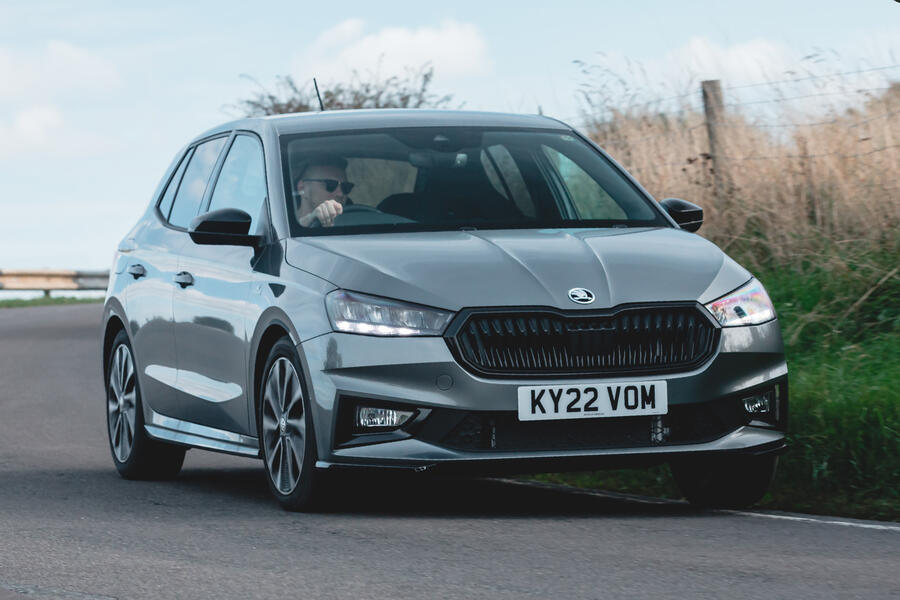
Low price? You betcha. Skoda manages to offer even this sporty-looking, range-topping Fabia at less than half the average price of a new car today, even if that is £23,990. Is that the best value, though? I mean, you could get a nicely equipped Dacia Sandero for less than £15,000. Or better still a less frilly Fabia, such as the £17,990 one Kiall Garrett enjoyed running for our sister title What Car?. But you want something a bit sporty, you say? Well, the Ford Fiesta ST-Line is right there, much more engaging to drive (if not quite as practical) for a few hundred less.
If you will forgive me from interjecting into our priority list here for a moment, this is a good time to discuss exactly how the Fabia Monte Carlo did drive. It definitely didn’t set my world on fire, not even carry a lighter in its back pocket as the revved-up Fabia vRS models once did.
It felt more powerful than I had expected, with a good lot of low-revs torque. However, the dual-clutcher stopped me from ever feeling like really rolling my sleeves up (and its manual override function wasn’t the best when I did try it). More to the point, Skoda stopped with the modifications for this sporting variant after the styling and the
powertrain, unlike Ford with the Fiesta ST-Line. The suspension and the steering was all left the same, and so while the Fabia did have the natural agility of a small and light car, it was nothing special when I brought its best competitors to mind, feeling secure and stable through corners but not eager and lively, as its rival from Cologne does. The ride, meanwhile, was usually comfortable, yet not the best in the class at damping surface intrusions at low or high speed.
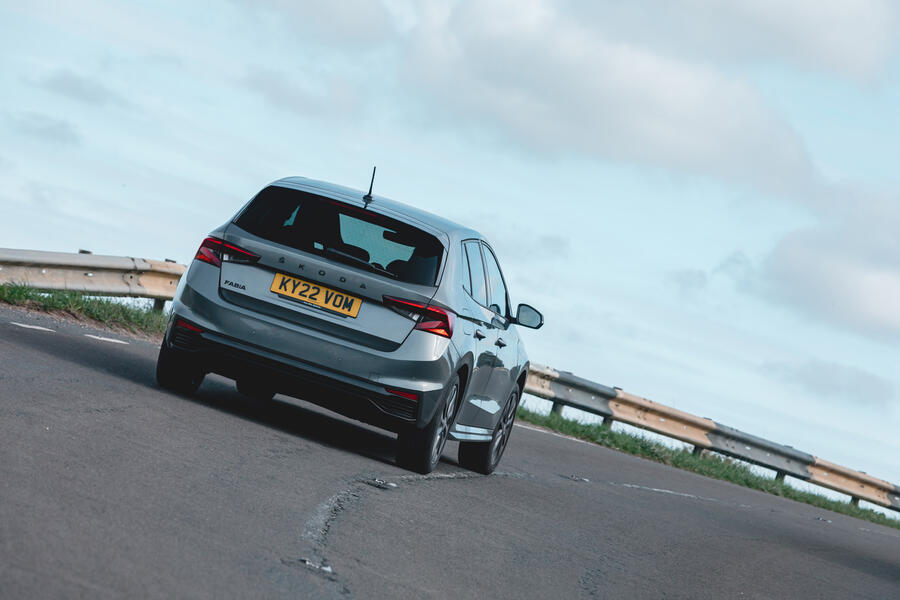
High quality also wasn’t an obvious strong suit of this Skoda, although I rather liked the way that the squatter and meaner new proportions of the Mk4 Fabia combine with the matt black-tinted Monte Carlo bodykit, and the red trim and faux carbonfibre looked good surrounding the semi-bucket seats (which were comfy as well as sufficiently supportive, by the way).
The touchscreen, too, proved happily trouble-free (it’s the older generation of Volkswagen Group tech, see), although some of the air-conditioning controls being located within its menus exacerbated my biggest current pet peeve with cars.
The design you know I liked, but such subjective matters are ultimately left for our readers to judge. What I will tell you for certain is that this Fabia ticked all the boxes it needed to, but not always with a proper coat of ink on the pen’s nib.
While I will passionately defend and support any manufacturer that retains an interest in making cars that normal working people can afford, there are others that do it more convincingly than the Fabia Monte Carlo. Still, if you take one for a test drive and you happen to really like it, don’t let me stop you. Because this kind of car isn’t going to be around for very much longer.
Second Opinion
The SE Comfort Fabia may seem a little unequipped, but the manual gearbox was an absolute pleasure, with slick, easy shifts giving interaction that made even the 94bhp 1.0-litre triple feel sporty and fun in a different way to the DSG Monte Carlo. Its analogue dials also gave it more of a real feel. I felt, despite some missing tech, the basic Fabia still had a lot to offer.
Kiall Garrett
Love it:
Stretch out The extra space the new platform affords means the Fabia could now genuinely be used as a family car.
Small and nippy In an era of massive, lumbering SUVs, it’s a joy to get back into a car so unencumbered.
Simply clever They may seem like token gestures, but the ticket holder, ice scraper and umbrella all proved handy
Loathe it:
Screen fatigue I’m so bloody tired of car makers putting air-conditioning controls on touchscreens. Stop it! Now!
Try a bit harder No adjustments to the chassis and the lack of a manual option stop this from being a truly sporty option.
Final mileage: 3945
Fabia is still proving popular... - 18 January
I was enthused to learn from Skoda publishing its 2022 results that the Mk4 Fabia put in a strong first year, and special reference was made to “a good start” for the sporty Monte Carlo. It pleases me to know people still want such sensible little hatches. Even so, while I can’t deny this trim further enhances the smarter new design, I think a Dacia-rivalling spec would be the wisest pick for most.
Mileage: 3910
You have to appreciate good things while they last - 4 January
Looking back over what I've written so far about our Skoda Fabia 1.5 TSI Monte Carlo, or Vom for short, I feel a bit of regret that I've let my natural tendency to focus on negatives take over a bit too often.
I'm duty bound to report faults, namely the windscreen wipers glitching and freezing amid heavy rain one day and (less importantly) a glossy piece of dashboard trim creating an irritating reflection, and still, I stand by my assessment that the Ford Fiesta Ecoboost ST-Line would be a much more suitable (not to mention cheaper) choice for anybody seeking a warm supermini for driving thrills.
However, there are many positives to my Czech mate that I have yet to discuss, and as our time draws to a close, it's probably about time I got on with it. So here goes.
I wonder whether my fondness for this Fabia has been heightened by recent developments covered in Autocar's news pages. To be real with you, I'm feeling disillusioned about the short-term future of the car industry at the moment. Ford is killing the Fiesta this year and Volkswagen is probably going to kill the Polo, too, and if there's no Polo, there surely won't be a Fabia or a Seat Ibiza either.
If Seat even exists, that is, what with the Cupra division now getting all the executives' attention because it's more desirable, by which naturally they mean 'less affordable' and therefore 'easier to make profitable'.
Of course, the blame for taking the likes of the Fabia away from us rests ultimately with European emissions legislators rather than the car manufacturers themselves. But, either way, the result is that the cleanest combustion-engined cars are being taken off sale while heavy, inefficient ones continue to proliferate - surely the opposite of what the world should be striving to achieve. Bravo!
I say they're the cleanest ICE cars because they're the lightest and smallest. My Fabia is a pretty good example of this because despite being the supposedly sporty variant, its MPG returns often hit the high 40s and on one occasion even troubling 60. Its overall average is 39, but that's not really representative because I practically live on the motorway - far away from the supermini's natural habitat.
Another plus point that I haven't yet focused on is the comfortable ride because I was dedicating more column inches to the disappointing inert chassis and steering. It's nicely controlled, especially for such a small car, never making my large commute tiresome, as some superminis have in the past.
And then there's space inside; I remember attending a Wolfsburg launch of the Polo in 2017 and the engineers proudly waxing lyrical about how much extra space there was inside (these days before everything being 'emotional') thanks to the new MQB platform and this is belatedly now also true of the Fbaia.
Four adults can travel in comfort (more than in a Fiesta I reckon) and I managed to get my big mountain bike in the boot, albeit after pushing the front passenger seat right up against the dashboard.
Frugal, affordable and enjoyable to drive purely by dint of its compactness and lightness... so many people will really miss like this once they've all been legislated out of feasibility.
Love it
Simple life
Trying our Mazda CX-60 recently only enhanced the impression that I already had of the Fabia: its size and simplicity are its strong suits.
Loathe it
Sod's law
The one time I've run a car without cruise control has coincided with me pulling my right hamstring. My 90-minute commute ends in agony.
Mileage; 3898
Skoda's umbrella is always a welcome addition - 21 December
In the freezing and stormy weather we’ve been enduring lately, I’ve been extremely grateful for the umbrella hidden inside a special hole in the Fabia’s driver’s door – a ‘Simply Clever’ feature that I also enjoyed on the previous generation. So handy is it, with its telescopic shaft, that I even put it in my hand luggage for a recent trip to Amsterdam.
Mileage: 3855
Life with a Skoda Fabia: Month 2
Glossy trim is a tad too reflective - 30 November
It was far too early for Guy Fawkes Night, so why was a series of little orange rockets shooting skyward before my eyes? After a few more nights doubting my sanity, I realised that these annoying ‘rockets’ were the street lights reflecting off the gloss plastic sides of the steering wheel housing. Did nobody at Skoda think to test this Fabia at night?
Mileage: 3632
Wiper software issue rears its head once again - 9 November
In driving rain recently, the Fabia’s wipers froze up and the dial screen showed an error message. Fortunately, I was in a queue so could restart the car and therefore the wipers. I suspected this would work because I used to get the same problem (surely software-related?) in 2018 on my Seat Arona. Really not impressed that the Volkswagen Group still hasn’t fixed it
Mileage: 2979
It’s a great antidote to a luxury SUV, but seems more Milton Keynes than Monte Carlo - 2 November
Context really is the key to understanding anything. It’s impossible to judge things fairly in isolation, and when taken out of context or put into unusual contexts, they can be cast in a very different light.
Such was the case when I first picked up our Skoda Fabia, having spent the previous week evaluating a Land Rover Discovery. The Discovery has exactly double the power and, quite horrifyingly, more than double the kerb weight; is 831mm longer, 246mm wider (mirrors included) and 427mm taller; and could hardly be more different in its reasons for being, or the audience it plays to.
So it was that the Fabia seemed impossibly tiny as I guided it almost unconsciously out of Autocar’s tight multi-storey (which had forced me to clamber over and out the back of the Landie), through rush-hour London congestion and home.
It was an instant reminder of how much I love small cars, whether they be alluring coupés or sensible hatchbacks. First, because they’re inherently more suitable and less stressful in an overpopulated country whose roads were laid out hundreds of years before the advent of motorised vehicles; and second, because they’re more enjoyable to drive, thanks to their combination of lightness and low centre of gravity.
I always tell non-car people when they’re confused by my excitement about a Ford Fiesta or such like: “It’s way more fun to drive a slow car fast than to drive a fast car slow.” However, now I no longer have a needlessly large, heavy, tall and expensive car for company, the real context of the Fabia has started to come into clearer view.
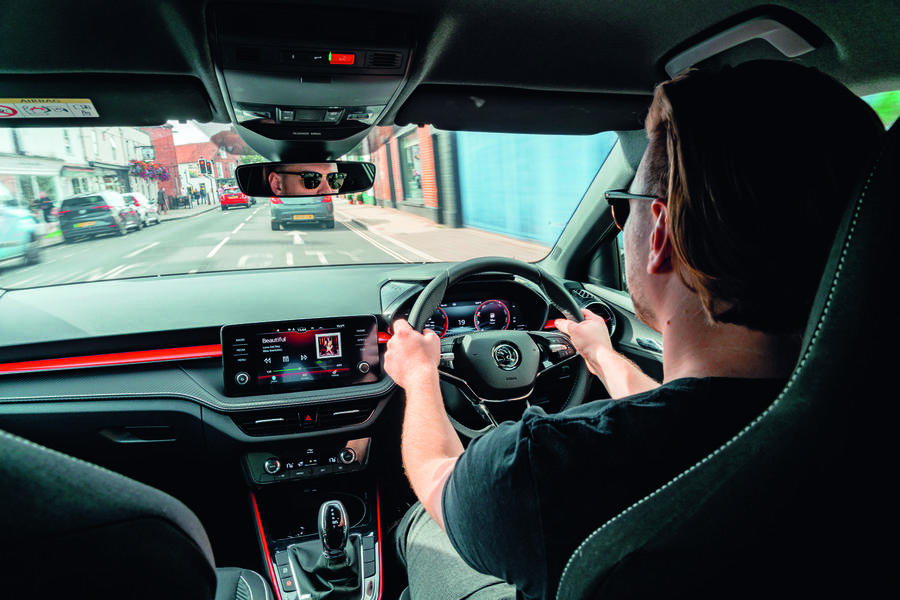
Is it fun to drive? Well, I must say that I had a great time getting it photographed on the South Downs, where it felt agile enough and pretty quick, thanks to the larger (1.5-litre) turbo petrol engine option, but I do wonder to what extent it justifies its chequered-flag Monte Carlo badging.
While it’s more fun than a regular Fabia and several rivals – among them the Dacia Sandero and the Peugeot 208 – it doesn’t have that ‘raring to go’ attitude of the Fiesta, imbued by its meaty steering, incisive chassis and super Ecoboost/manual drivetrain. And that car actually costs two grand less in sporty ST-Line form. Hmm...
Maybe a manual gearbox would help the Monte Carlo, but that’s not an option anyway, and it wouldn’t do anything for my confidence in the steering or handling. This might be something that builds gradually with familiarity, but for now this Fabia seems to me simply a ‘faster’ supermini, rather than a ‘warm’ one.
Actually, it brings to mind the Volkswagen Polo GTI, which served as a poor introduction to the GTI sub-brand for me, being limited to an automatic gearbox and never really indicating that it fancied making a go of a country road. Which is hardly a shocker when the new Fabia is based on the same platform.
Nevertheless, I’m very pleased to be back in a humble supermini, not just for the aforementioned reasons of suitability and pleasantness but also, very importantly to me, because it feels much more responsible than the Discovery or indeed any SUV.
Love it
Right sizing
I love how I can breeze down tight streets and through gaps in traffic without having to think constantly about not hitting anything.
Loathe it
Wrong wiring
My iPhone says “accessory not supported” if I plug my USB cable into the USB-C adaptor, so I have to buy a new wire to use Apple CarPlay.
Mileage: 2534
Life with a Skoda Fabia Monte Carlo: Month 1
The Fabia's ticket holder is more innovative than first thought - 19 October
I always used to see the little ticket holder that Skoda fits over its cars’ windscreens as superfluous. Why wouldn’t you just put tickets on the dashboard? But now I’m having to park at home under the evil eye of parking officers, who have already tried to fine me twice, the holder is proving an ideal failsafe for my occasional forgetfulness.
Mileage: 1881
Welcoming the Fabia to the fleet - 12 October 2022
Just like the Formula 1 race around the tight streets of Monte Carlo with which it shares a name, the sporty version of the Skoda Fabia has been handed a multi-year extension. Even as an F1 fan, I am much happier about the little Czech hatchback’s news.
Whereas that grand prix is a tedious procession offering very little excitement, its Skoda namesake offers the enticing pairing of compact dimensions and over-endowment in the powertrain department; and in contrast to the grotesque display of wealth seen trackside, here’s a car for everyday people, costing from £21,125, or £209 per month on a PCP.
You might consider that costly, but if so you need to get with the times – because that’s precisely half the UK average for a new car. The Fabia in its most basic form is actually £17,990, which may be more palatable, but our car is the most expensive it can get, at £23,925, or £232 per month on a PCP.
Why? Because we’ve chucked out the 1.0-litre three-cylinder turbo petrol engine that you get in any old Fabia for the 1.5-litre turbo four from the Volkswagen Golf, taking power up from 108bhp to 148bhp. The only downside is that in so doing you’re forced to lose a manual gearbox for a seven-speed DSG. Does that diminish the fun of a warmed-up supermini? I would say so, but here’s hoping the Fabia proves me wrong.

What else does Monte Carlo trim bring to the Fabia? More than I was expecting, actually – certainly on the outside. The grille surround is black rather than chrome, sporty black skirts are added to the bumpers and sides (giving the impression of a diffuser at the rear) and the wheels grow from 15in or 16in to 17in or 18in. Our car has kept the smaller Procyon diamond-cut alloys, which should bode better for the ride comfort.
In fact, our Fabia – which I’ve nicknamed the Vom, not because it looks vomit-inducing but because of its unfortunate registration – is fitted with no options at all. Even the rather fetching Graphite Grey metallic paint (it sparkles in the sun) is a free option.
The interior is therefore just like in the brochure. Bucket-type sports seats in black fabric with nifty grey-and-red racing stripes running their length are complemented by a full-width red plastic trim piece, red grab handles on the front doors and faux carbon fibre on the dashboard and doors (although it has stitching on it, so I guess Skoda has no experience with the real stuff).
The Virtual Cockpit is also standard, this a digital display where you would usually find dials, along with a 10.25in touchscreen, which fills the frame atop the dash much more aesthetically pleasingly than the lesser 9.2in and 6.5in items.
Would I add any options if I were buying this car? Definitely. Just £55 to make the Apple CarPlay and Android Auto wireless is a no-brainer, and then there’s the Winter Pack, at £600. A lot, yes, but as the gloom of autumn descends, I would really appreciate heated front seats, heated washer nozzles and a heated windscreen (although at least Skoda gives everyone an ice scraper, neatly packaged inside the fuel filler).

Instead, I must keep warm via the dual-zone climate control – which has already caused frustration. It’s immensely annoying, not to mention a safety risk, when manufacturers put climate controls on a screen, but Skoda has been especially egregious here.
There is a dedicated panel of dials and buttons, yet to change the direction of the air or the speed of the blower, you must press the button marked menu, wait a second for the software to react and then fiddle about with tiny icons on the screen. I guess I will just continue screaming into an unresponsive void.
Going back to the Winter Pack, it also adds cruise control. Quite how this can be seasonal is beyond me – as is why it isn’t standard. Instead, I must set the speed limiter to 70mph and hold down the accelerator pedal – no tragedy but needless extra effort.
Let’s return to the positives, though, because I already have a lot of time for the Vom. I ran a Fabia back in 2018, and the differences – all of them, in fact, advances – between generations three and four are plain to see.

For starters, the belated move onto the platform used by the incumbent Seat Ibiza and Volkswagen Polo has made the Fabia bigger and therefore significantly more spacious. In fact, it feels very similar indeed to the Scala, which is meant to be the next step up in the Skoda range, and which I have also previously run.
Then there’s the interior, which feels a bit nicer (if still scratchy in places) and looks more modern. And, most importantly for the likes of us, it feels keener to corner than I ever remember, already imbuing me with notably more trust.
It’s also economical, officially recording 49.7mpg, which is very welcome indeed in these times of having to wear two jumpers at home. I wonder whether it might even prove more frugal than my previous long-termer, a Honda HR-V, which while bigger and a bluff crossover had a hybrid powertrain.
Incidentally, MPG is boosted on all Fabias by an active-aero flap. Perhaps it’s not quite so far removed from the future of F1 as I had first thought.
Second Opinion
Next to my dad’s £350, 15-year-old Fabia, this feels like a Rolls-Royce, but I do wonder if the blanked buttons and scratchy plastics call into question the range-topper’s price. It also uses the Volkswagen Group’s previous-generation infotainment – but I think Kris will be glad of that, given how hard the new tech is to live with.
Felix Page
Skoda Fabia 1.5 TSI Monte Carlo DSG specification
Specs: Price New £23,925 Price as tested £23,925 Options
Test Data: Engine 1.5-litre petrol Power 148bhp Torque 184lb ft Kerb weight 1151kg Top speed 137mph 0-62mph 8.0sec Fuel economy 51.1mpg CO2 125g/km Faults None Expenses None

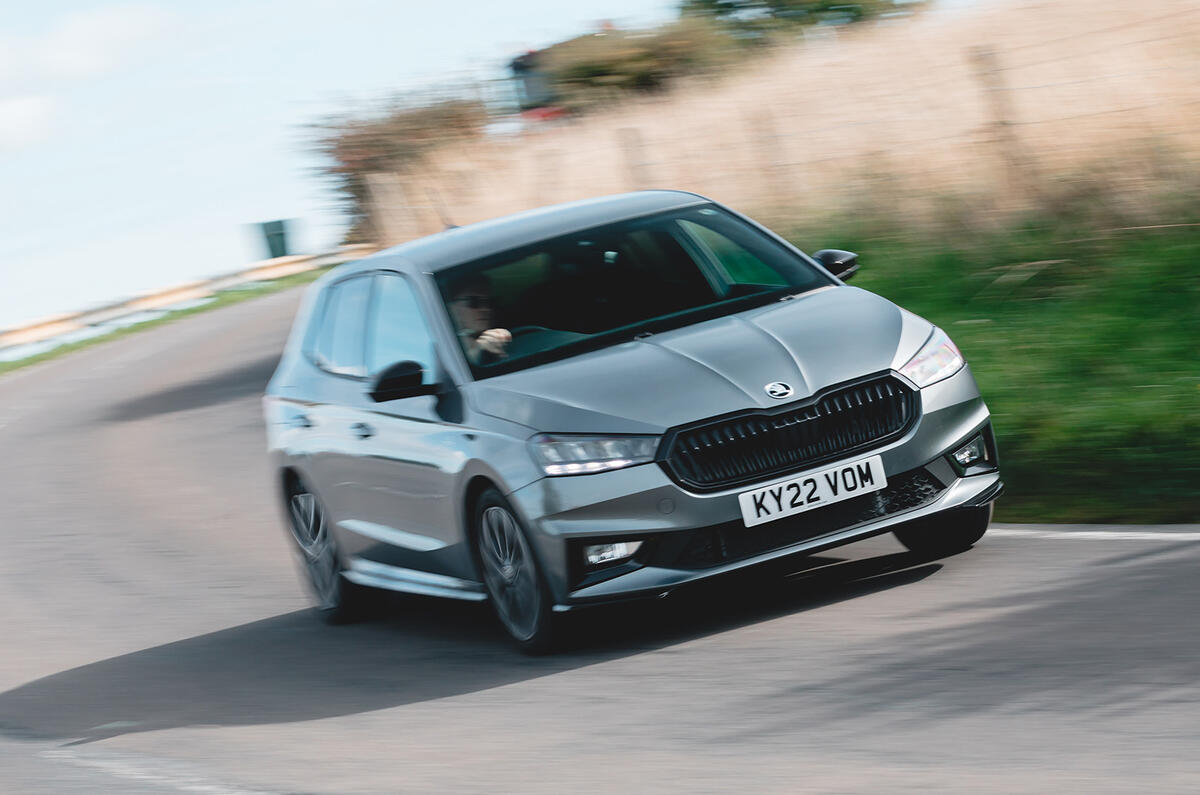
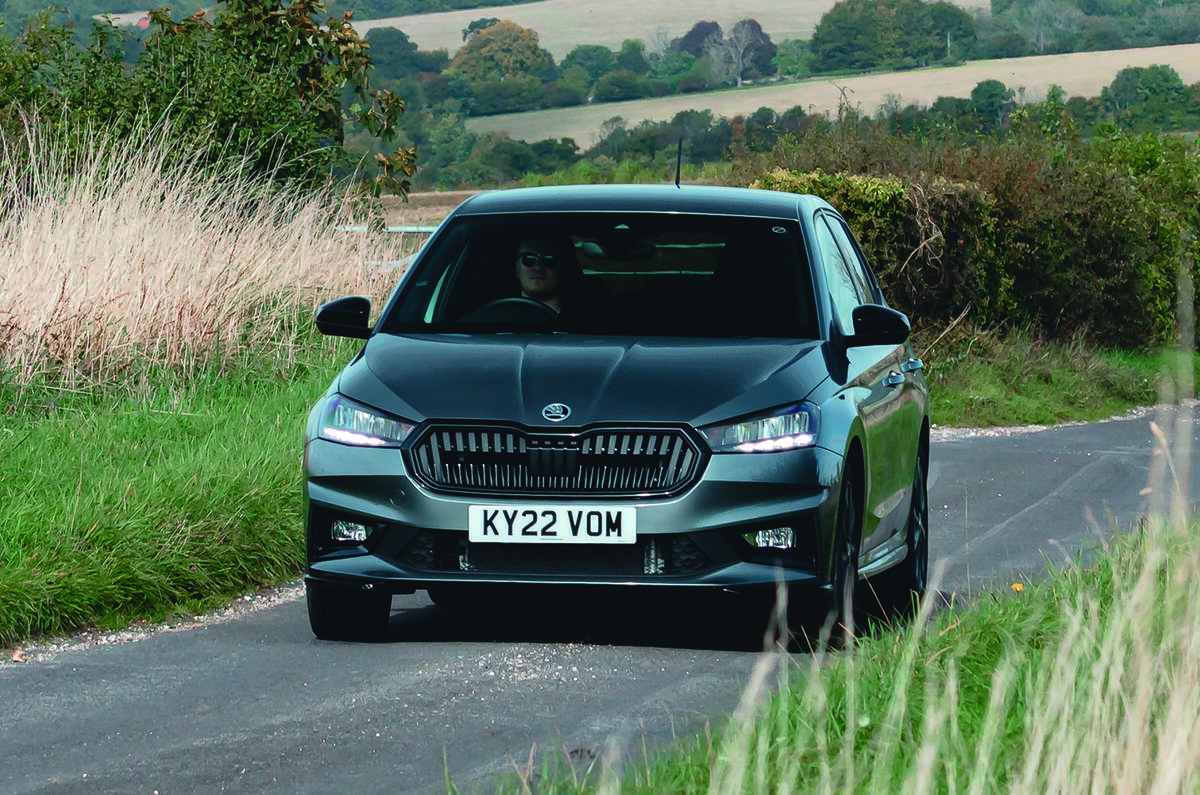

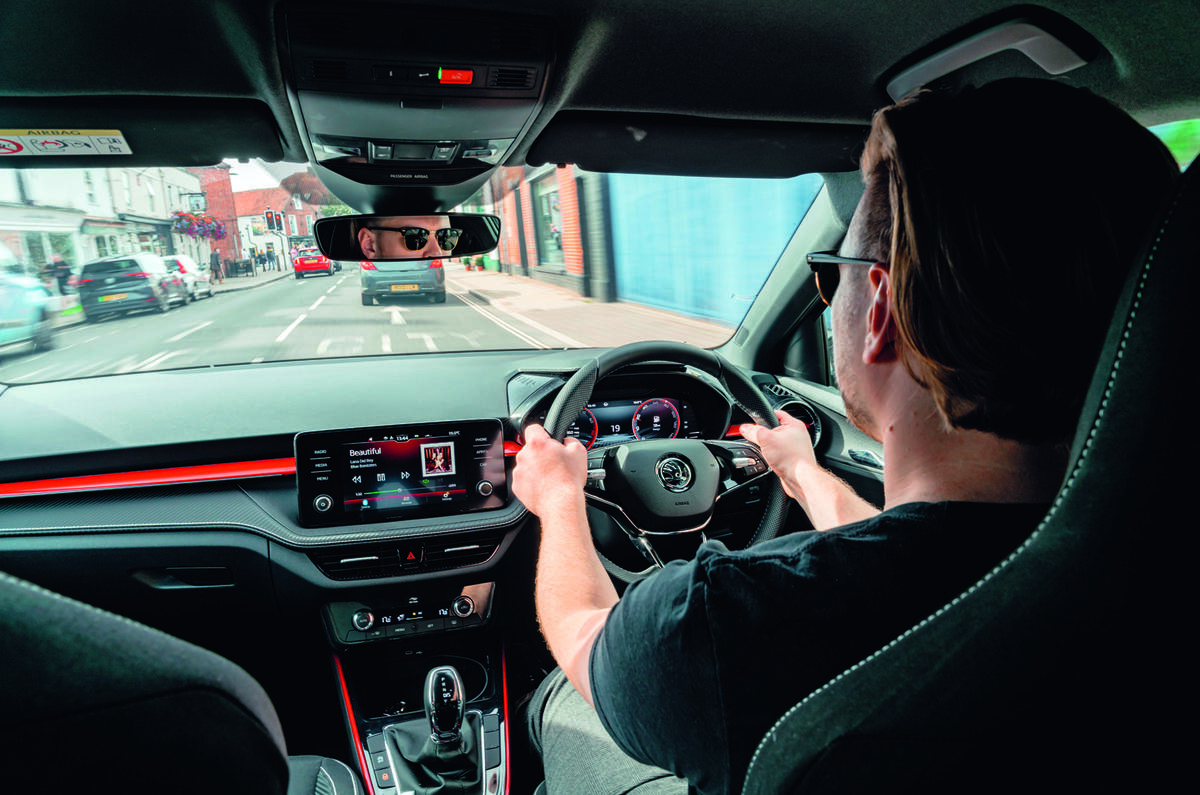
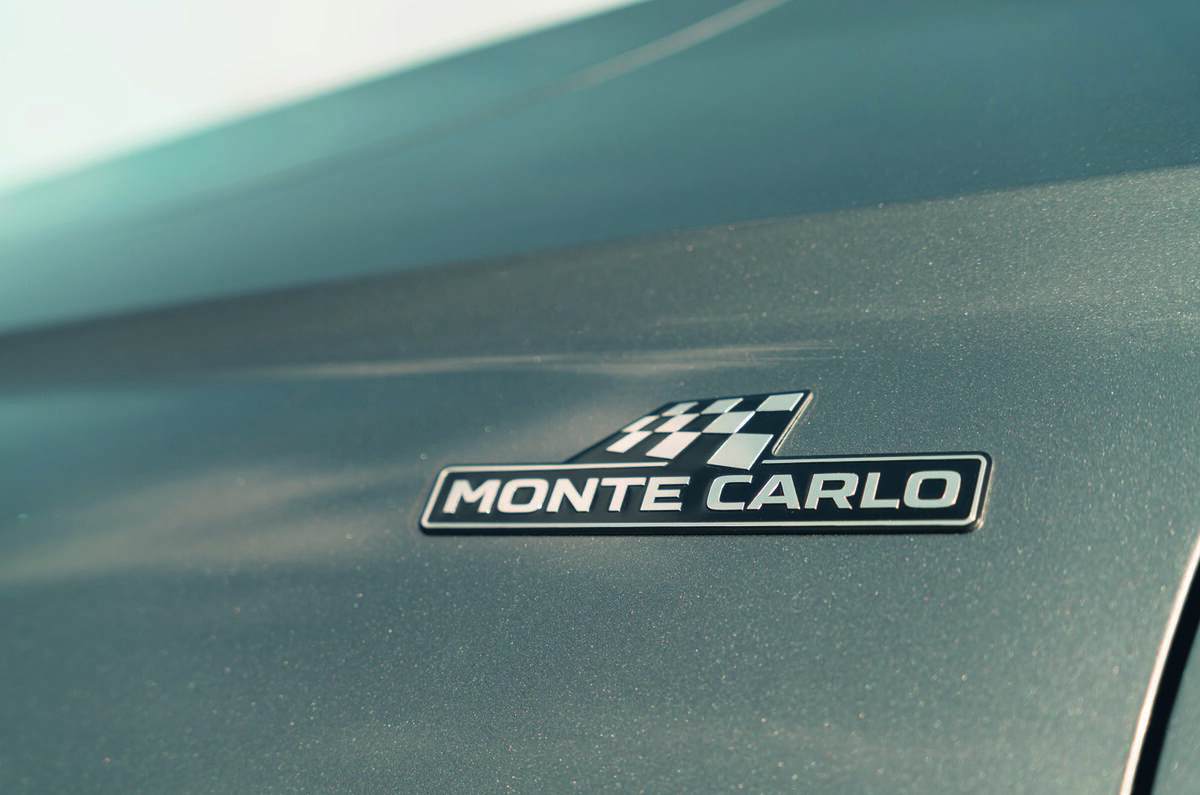


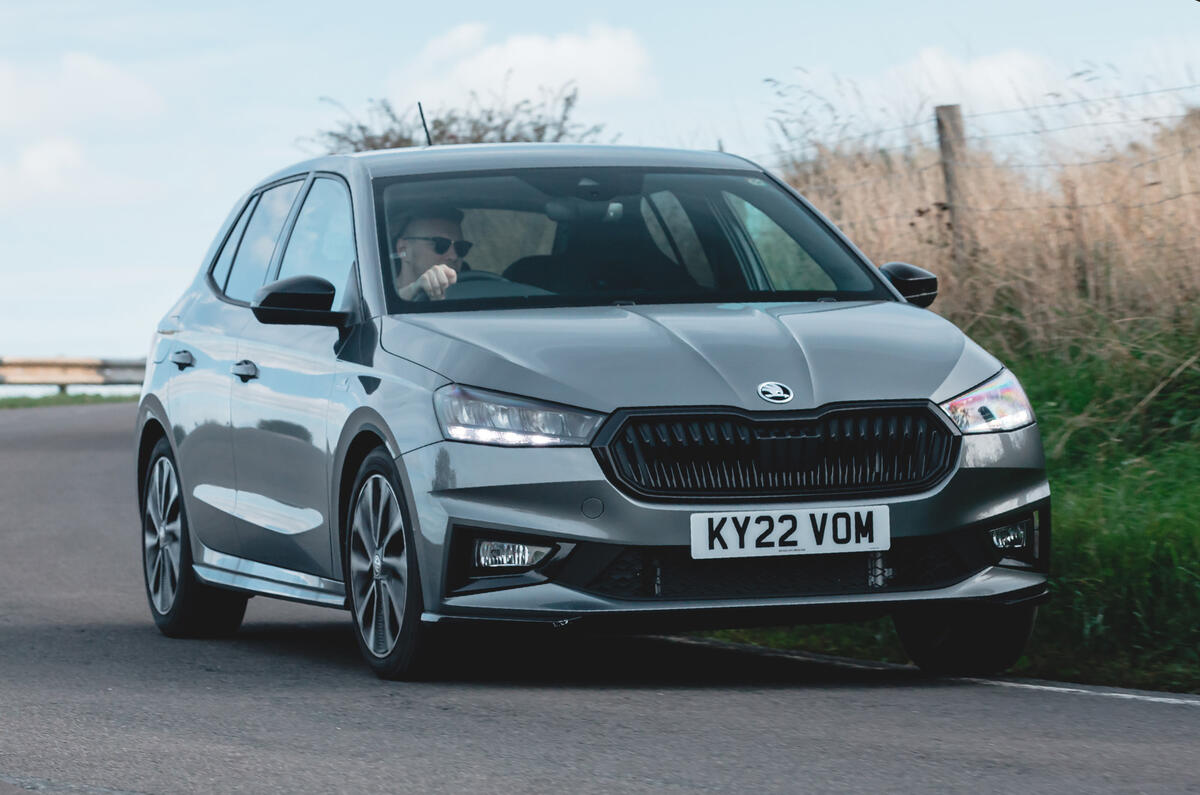
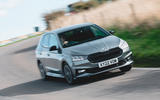
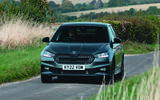




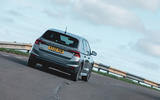
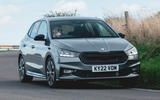

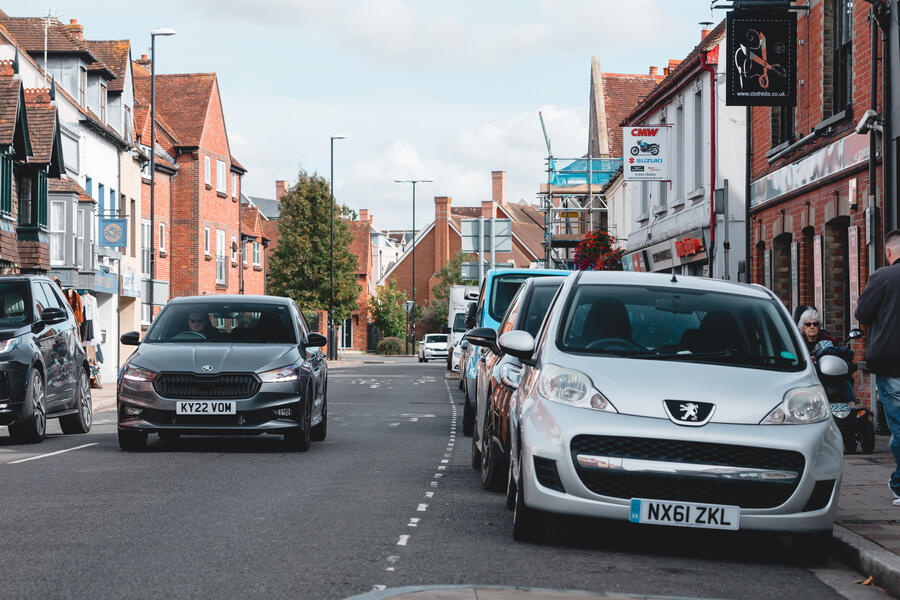

Join the debate
Add your comment
There's three months of your life you're never getting back :-(
Mr Culmer, thank you for enduring a long term test in this car; it definitely sounds like one to avoid. Long term tests are fantastic - some of the most worthwhile for your readers.
Although it shows my age, I am amazed that this cost less than half the average price of a new car today... so that is £48k or over?!? That explains why more than 9 out 10 car sales in the UK are now on finance!
Given the all-round ability of many modern sub-£40k cars (e.g. Fiesta, Skoda Superb, Mazda MX-5), isn't it astonishing that so many people buy >£50k motors?
A rival weekly mag mentioned these nonsensical climate controls in their Fabia long term review. The tester said she found it much easier to ask her front seat passenger to do it for her, as its fidliness took her attention away from the road for too long. Thats progress for you.